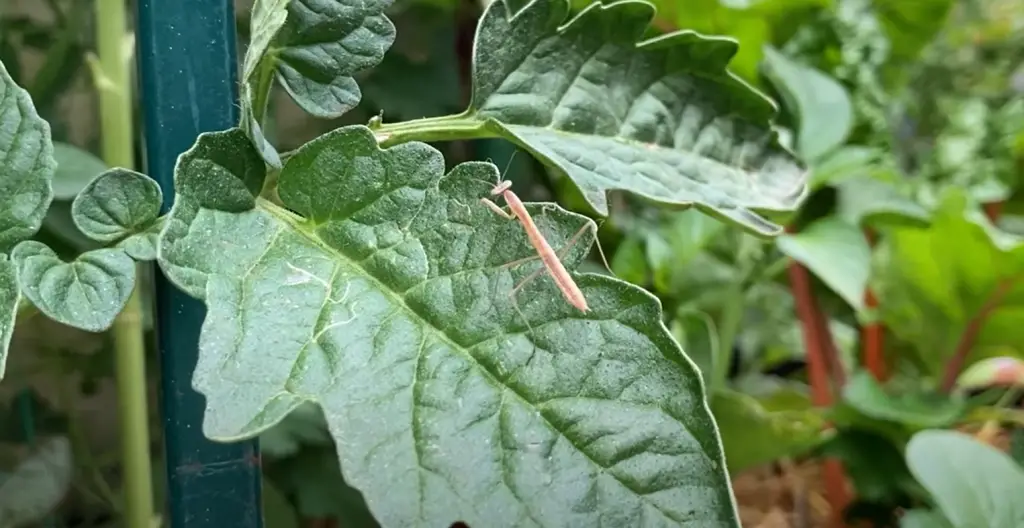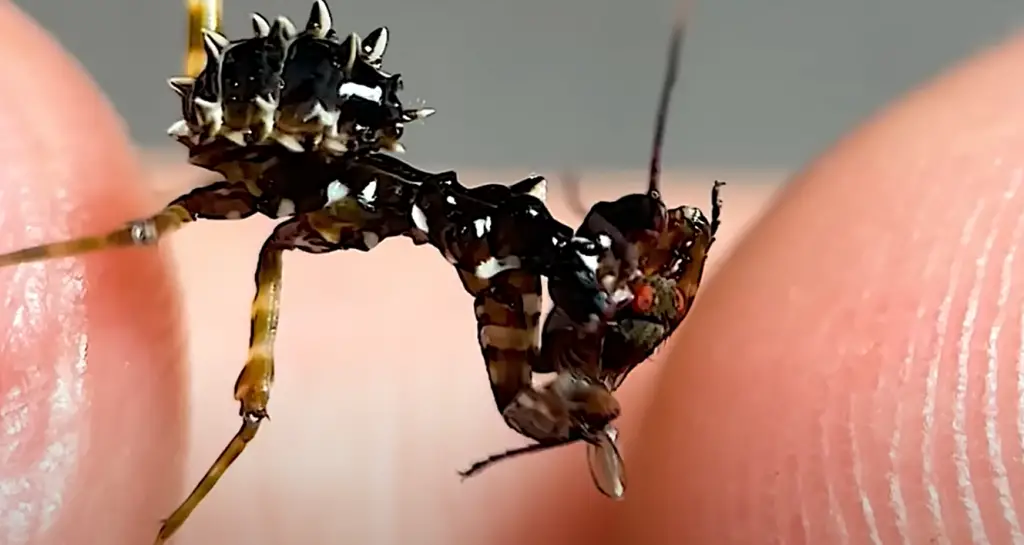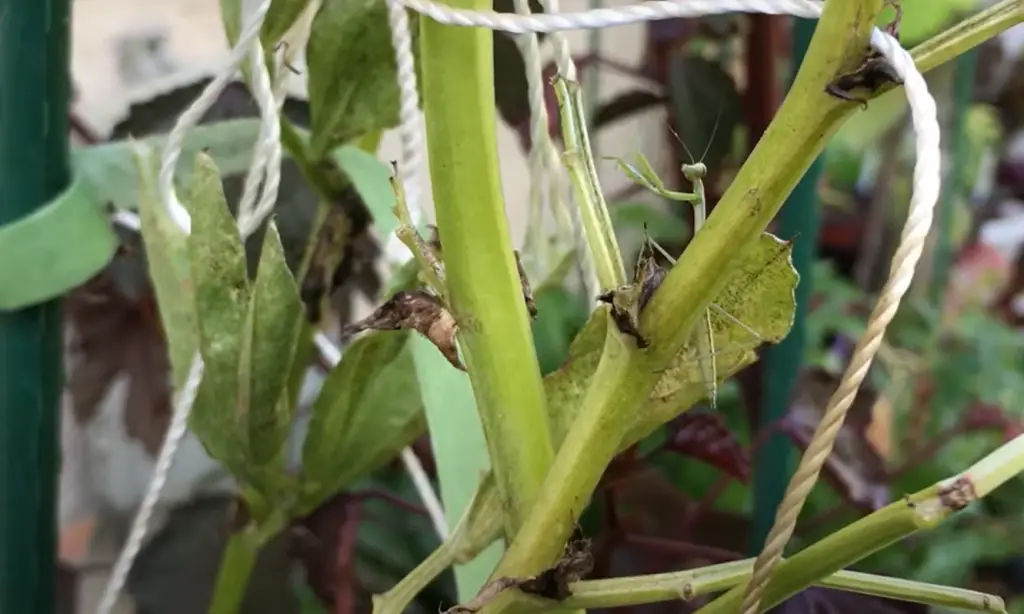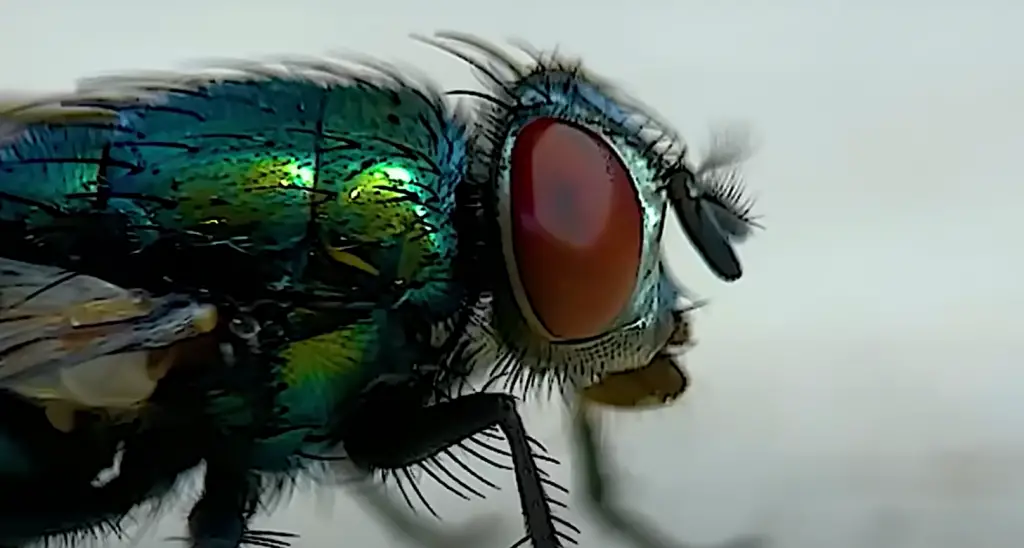If you’re wondering if praying mantises are good for the garden, you’ve come to the right place! In this guide, we will answer all of your questions about butterflies and provide some tips on how to attract them to your garden. Praying mantises are beneficial for gardens because they eat pests like aphids, caterpillars, and grasshoppers.
Praying Mantises Information
The Chinese mantis is the most common type of insect found in North America. They have big bodies. The colours can be different depending on what they eat. Their name comes from how they hold themselves when they are resting. They stand up on two legs, so you can’t really tell if it is a male or female. They look just as elegant when they are still.
This includes other insects, spiders or even small birds! Some species have been known to eat meat, fruit, and vegetables. This is more than what most people can say today.Mantises are beneficial because they can help control various pests, but if their population gets too high it can become an issue. Praying mantises are not for everyone. Some people say they’re great, while others say they’re not so good. You need to think about this before you decide if you want them in your home or garden.

Mantids are a great way to help keep your garden pest-free. Insects can cause a lot of damage to your garden if they are not controlled. Aphids, caterpillars, beetles and other insects can all do damage if they are not kept under control.
If we don’t give them any opportunity for replacement hatchlings, we will never need another one again. [2]Are they Good Or Bad For The Garden?
Some people think that pesticides are helpful because they eat pests. Other people think that they are harmful because they also eat beneficial insects like bees.
The praying mantis may be a beneficial insect to have around, but it’s important not to take any chances with their presence. Monitoring the situation closely will help make sure that they are helping your garden, not hurting it!
Here are some things to keep in mind about praying mantis and their impact on your garden:
- The praying mantis is a predator that will eat any kind of insect it can catch, including both pests and beneficial insects.
- It’s always better to be safe than sorry when it comes to pest control. Make sure there are no bees or butterflies around before the day of praying mantis hunting, because they eat these pollinators!
- Mantises may be beneficial because they eat pests. However, their competition with other predators for food can make them harmful in some situations – especially if there are too many of these insects around!
- It is a fascinating creature that has the ability to lay its eggs in silk sacs. If you want to hatch baby mantises, you will need to leave them alone and make sure that they don’t get eaten. You can only have up to 200 baby mantises.
Attracting Praying Mantises To Your Garden
Want to attract more praying mantises into your garden? Here is how. First, provide them with plenty of food – they love eating insects! One way to keep pests away from your house is to plant flowers that attract them. This will give the flyers something to eat so they don’t bother you. You can plant dandelions and cosmos, for example. [1]
What Do Garden Praying Mantis Eat?
The adult mantis will consume anything it can subdue and kill. This includes:
- Other insects
- Lizards
- Small frogs
- Birds
If you want to keep your garden pest-free, then get yourself some praying mantises! The bugs that are bugging you will also eat the other bugs. But don’t worry: they also enjoy eating bees and ladybugs too – as long as those goodies make their way into a tasty meal though.

Releasing praying mantises into your garden may be a good option if you want less competition with beneficial insects. They are not harmful to either humans or pets.
If you have a pet lizard or small frog, be sure to keep them away from the praying mantis. The praying mantis will see them as prey.
Keep an eye on your garden for any pests that might be trouble. If you have a lot of these little guys running around, then consider getting one or two praying mantises to help keep their population in check. Make sure that they don’t eat anything beneficial!
Using Praying Mantis for Pest Control
Praying mantises are a beneficial insect that can eat up to 100 prey items in one week! They’re omnivores, but their favourite food sources include aphids and caterpillars. If you are having pest problems with pests like praying mantises or leafhoppers, you should install some traps to catch them.
The praying mantis is a neat insect that you can find in your garden. They like eating bugs, so if there are more of those around they will stay longer! Some people might want to order pepper spray online or get it from a store near them. This type of spray can really hurt someone if they aren’t expecting it.
The praying mantis is not an easy creature to care for. They need plenty of food and hiding places, or they’ll move on in search of greener pastures!
It is important to monitor the number of mantises in your garden and take steps if necessary. Praying mantises can help control pests, but if they become too numerous, it can create an unhealthy environment for plants. [2]
Other Facts About Praying Mantises
The generalist nature of the praying mantis makes them an effective pest control specialist. They’ll eat anything, from leaves to smaller insects. But this also means that if their populations get too large, they could become pests themselves.

The female praying mantis will eat the male if given the opportunity. In captive populations, cannibalism is more common when there is not enough food to go around. This means that sometimes one animal will eat another.
However, this behaviour usually does not happen when there is plenty of food or when the animals can find food elsewhere that is better for them than what they were originally intending to eat.
It’s not easy to control a praying mantis. If you find one in your garden, the best thing would be to leave it alone and let nature take its course. Praying mantises usually stay away from people anyway. Sometimes we have to help insects, like by feeding them or giving them a place to live. But if they don’t come close enough to people during development, then there shouldn’t be any problems.
Praying mantises are beneficial insects that can be a great asset to any garden.
The best thing to do is probably call pest control professionals. It may take some time, but your home will no longer feel like there is an infestation going around inside the walls or ceilings.Praying mantises can be a very valuable addition to your garden, but you need to do your research first. Make sure you know what you’re getting into and be prepared for anything. [2]
FAQ
Are Praying Mantis Good to Have Around?
Yes, praying mantis are beneficial to have around as they help control pests in the garden. They are especially good at controlling aphids and other small insects that can damage plants.
Praying mantises are interesting creatures that can provide hours of entertainment for both children and adults.
Praying mantises can be a great pest controller in your garden. They feed on pesky insects that leave droppings and wings around, making them an important natural asset to have!
Where Should I Put a Praying Mantis I Found?
Despite appearing to be enemies of gardens, prayer mantises actually help to keep populations of other insects in check. If you find one near your home or garden, release it immediately!
If you want to release a praying mantis into your garden, simply place it on any plant or in the bush. Some turtles can be kept inside an enclosure if that makes them feel safe. But you will need to take the enclosure away after they get used to it, or else predators might get them!

If you’re interested in keeping a praying mantis as your new pet, there are several things that should be considered. Praying mantises are carnivorous and eat live insects. Insects can be bought at any store or online.
It’s always a good idea to be gentle with mantises because they’re so delicate. If you don’t want your child or pet to get hurt, it is important to keep a safe distance between yourself and any bugs.
Lastly, praying mantises can be aggressive and even bite if they feel threatened. If you’re not comfortable around animals that might bite, this probably isn’t the pet for you. Taking on this kind of risk is something that not everyone is ready for.
How Do You Befriend a Praying Mantis?
The easiest way to make friends with a praying mantis is by offering it food. Some people think that all insects are carnivores, but that’s not always true. Some species of insect have an omnivorous diet, which means they will eat both plants and animals. If you’re looking for a new friend in the insect world, try feeding them some greens too!
Gently petting a mantis is not recommended for all species, but some actually enjoy being touched. If you choose to use this technique, be careful not to use too much pressure. If you do, you might startle or hurt the insect!
Maintaining a distance is the best way to make friends with most bugs. These insects generally prefer to stay away from people. But sometimes they might act differently.
Can Praying Mantis Bite You?
If you are bitten, the bite won’t harm you, but it can be painful. If you are bitten, wash the area with soap and water to prevent infection.
Mantises eat many different types of insects, including bees, butterflies, crickets, flies, grasshoppers, and moths. They can be helpful to have in the garden because they help to control the population of other insects. However, there are a few reasons why you might not want to rely on them as your main method of pest control.
Mantises can become a problem if they start eating insects that people want, like bees and butterflies. They can also become a nuisance if they build their nests near where people live or gather, like porches and patios.
If you have praying mantises in your garden and you don’t want them there, you can try to remove them. You can use your hands or a stick to do this. You can also use insecticidal soap or horticultural oil to kill them. Be sure to follow the manufacturer’s instructions when using these products.
Useful Video:Using Praying Mantis in the Garden? – WATCH THIS FIRST
Conclusion
Praying mantises can help us gardeners in a few ways. First, they eat aphids and other small pests that can harm plants. Second, they are an indicator of a healthy garden ecosystem. If you have praying mantises in your garden, it means that your environment is balanced and conducive to plant growth. Finally, these fascinating creatures are fun to watch! They move so quickly and gracefully; it’s amazing to see them hunting down prey.
If you’re looking for a beneficial garden insect, the praying mantis is a great choice. Just be sure to release them into your garden at night, when they are less likely to be eaten by birds. With a little luck, you’ll have these helpful predators around all season long. Happy gardening!
References:
- https://blog.lawneq.com/praying-mantises-good-or-bad-for-the-garden/
- https://www.gardeningknowhow.com/garden-how-to/beneficial/attract-praying-mantis.htm










Leave a Reply
View Comments